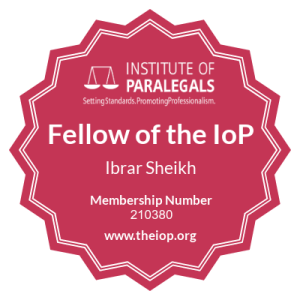Step 1: Agree Childcare Arrangements
When possible your first steps should be to voluntarily agree childcare arrangements with your partner.
If you and your partner cannot reach an agreement, you will both need to attend mediation. When you have an agreement, you can have this written up into a parenting agreement.
A parenting agreement is not a legal contract and isn’t intended to be enforced by the court. A parenting agreement is to help separated parents stay out of court by encouraging both parents to make practical and workable childcare arrangements by themselves.
It will give both parents a valuable opportunity to sit down and discuss how you both would like your children to be raised after your separation and give you both the chance to discuss your children and their upbringing and covers all aspects of your children’s lives.
A parenting agreement shows a willingness to co-operate and agree between the parents.
Step 2: Apply for A Child Arrangements Order
If you are unable to come to an agreement for childcare arrangements with your partner, then either you or your partner will need to apply to the court for a Child Arrangement Order, where the court will decide the arrangements.
A Child Arrangements Order will state who the children will live with, when the child is to live with any other person, and the parent who the child will visit and or contact with.
Before you can submit a C100 application to the court, you will need to attend a Mediation Information Assessment Meeting with a mediator, the mediator will assess if you are both suitable for mediation.
The mediator will sign the appropriate part of the C100 form, once its fully completed you can then submit it to the court, the court fees will cost £253.
The parent that makes the application is called the applicant, while the other parent is called the respondent.
Step 3: Court Process
Once an application to the court has been made then, unless agreement is reached, a full interim hearing will take place.
This usually involves each party (and any witnesses they intend to call) filing a written statement, and the court appointing a CAFCASS officer to investigate and prepare a report for the court.
This can involve a number of hearings and can take a number of months to complete.
Step 4: Child Arrangements Order
Once the interim hearing has been completed, a final hearing will be fixed when the court will listen to the evidence and, if appropriate, make a Child Arrangements Order.
1. Agree Childcare Arrangements
When possible your first steps should be to voluntarily agree childcare arrangements with your partner.
Overview
If it is possible to discuss matters with your partner then you should talk to them directly to try to agree on childcare arrangements, discuss things like which parent the child will live with and what contact the other parent will have with the children.
Residence
Residence means who the children will primarily live, or whether the spend equal time with each parent which is called shared residence. If the children do live primarily with one parent, this does not mean that the parent they live with has any rights or responsibilities over and above the other parent.
Contact
This is the time that the children spend with the ‘non-residential’ parent, including things like what days, times of pick up and drop off, and who will be picking them up and dropping them off to the residential parent. There are no rules as how much contact a non-residential parent should have, but usually it would be at least once a week and possibly overnight stays and additional contact during holiday periods. Contact can include things such as telephone, letters, email, internet messaging and text messaging.
Shared Residence
Shared residence means that the children will live with both parents and have two equal homes. It does not always mean a equal split of the child’s time.
The ‘no order principle’
If you manage to agree on arrangements for residence and contact with your partner then no court order or other documentary proof of the agreement is usually not required. There is a general principle that says no court order will be made relating to childcare arrangements unless an order IS required – this means that the law will try to leave childcare arguments to the parents wherever possible. This is to allow flexibility, so it is easier for parents to change the arrangements (permanently or temporary) without having to go back to the courts.
Mediation
If you are unable to sort out arrangements with your spouse directly, then you may want to consider mediation. Mediation is the process where the parents will have one or more meetings with a trained and qualified mediator, who will help the parents try to agree on arrangements for childcare. Mediation is on a voluntary basis so mediation can only go ahead if both parents agree. While mediation is not free, the cost will be substantially less than court fees (legal aid may still be available).
Frequently Asked Questions:
I have not yet agreed arrangements for the children with my spouse. Can I still issue the divorce proceedings?
Yes, you can, the divorce petition now only requires the details of the children and not the arrangements for their care.
If I agree to the children living primarily with my spouse, will I still share parental responsibility for them?
Yes. Where the parents were married, both will continue to have parental responsibility for them, irrespective of the childcare arrangements.
Can we have a written agreement without going to Court?
Yes you can; this would be a Parenting Agreement, this is not a legal contract and it isn’t intended to be enforced by a court. In fact, it is intended to help separated parents stay out of court by encouraging them to make practical and workable arrangements for their children by themselves. it will give both parents a valuable opportunity to sit down and discuss how you both would like your children to be raised post-separation and give you both the chance to discuss your children and their upbringing and covers all aspects to the children’s lives.
A Parenting Agreement demonstrates a willingness to co-operate and agree between the parents.
Do we take into account the wishes of the children?
Yes, if appropriate. See Step 3 ‘Investigation’.
2. Apply For Child Arrangements Order
If you are unable to come to a agreement for childcare arrangements with your partner, then either you or your partner will need to apply to the court for a Child Arrangement Order, where the court will decide the arrangements.
Which court?
You should apply to the designated family centre, which is usually the one which is nearest the child, and there is a fee of £253.
The Application
The application is made using form C100 ‘Application under the Children Act 1989 for a residence, contact or other section 8 order’. The party making the application (the ‘applicant’) must complete the form by setting out some basic details of the parties and the children, what order or orders are being sought, and why.
Once the form has been completed, it should be filed with the court, together with a copy for the other party and the court fee. Note that the C100 form has now changed, and now incorporates the FM1 form, which must be signed and completed by a mediator.
You are also advised to attach a parenting plan to your C100. You must make sure your paperwork is in order, otherwise the case will not be issued by the Court.
The court will then issue the application, fix a first hearing date and return one copy of the application, together with a notice of proceedings form and an acknowledgement form, to the applicant.
The applicant must then send all three documents to the other party (the ‘respondent’), and file a statement of service form with the court confirming when and where the documents were sent. The respondent should complete the acknowledgement form stating whether they intend to oppose the application, file it with the court and send a copy to the applicant.
The First Hearing
The first hearing will usually be a short ‘directions’ appointment, where the court will want to find out what the issues are and will decide how the matter will proceed (see step 3).
Most courts will also be expecting the parties to be interviewed together by a CAFCASS officer, before going in front of the district judge or magistrates’ clerk. The CAFCASS officer will ask both parties what the issues are and will find out if the issue can be resolved by agreement, either with the CAFCASS officer or through mediation (see step 1).
Sometimes, a partial agreement can be reached, for example a temporary agreement for the children and then going back to court at a later date to see how that arrangement has worked.
The CAFCASS officer will report to the district judge or magistrates’ clerk before both parties are called into court.
If the parties have reached an agreement, then the court will decide if an order should be made (see the ‘no order principle’ under step 1). If it is a complete agreement, then the proceedings will end there but either party can go back to court if the agreement breaks down or needs to be changed. To see what happens if no agreement is reached, see step 3.
Frequently Asked Questions
Do I have to be interviewed by the CAFCASS officer with my spouse present?
Yes, unless there is a good reason why not, such as domestic violence.
What if my spouse fails to appear at the first hearing?
Provided that it is satisfied that your spouse has received notice of the application, then the court may proceed in their absence.
Useful resources for this step
Information Leaflets
– Making an application (CB1) – children and the family courts
– Serving the forms – Children Act 1989 (CB3)
Court forms
3. Court Process
Once an application to the court has been made then (unless an agreement is reached) a full investigation will take place. This usually involves each party and any expert witnesses (a person who is called to testify because of their knowledge or skill relevant to the case) filing a written statement, and the court appointing a CAFCASS officer to investigate and prepare a report for the court. These reports are called ‘Section 7 Report’ and cover all outstanding issues, the judge hearing the case will take the section 7 report and its recommendations into consideration.
Procedure
The first hearing is for the judge to decide if mediation will help, if the judge decided not the then the court will give ‘directions’ as to what should happen next (such as what evidence will be needed before the court can decide on the matter).
This can involve any number of steps/enquires, but usually involves at least 2 :–
- Giving each party a time limit where they and any expert witnesses they wish to call must prepare written statements where they set out their case. These statements are filed with the court and copies are given to the other party and any CAFCASS officer appointed.
- If appropriate, appointing a CAFCASS officer to investigate the case and prepare a written report for the court. If needed CAFCASS will also appoint a guardian to the children to help with the report, these are called 16.3 guardians.
Factors taken into account:
When deciding an application relating to children, the court will have regard to the following factors:
- The wishes and feelings of the children (taking into consideration their age and understanding). There is no age specific ‘cut offs’, it is generally the maturity of the child more than their age. As each child develops at a different rate, there is a test called a ‘Gillick Competence Test’ which can be carried out by a doctor to define the ability of a child to make their own decisions, this test is not often offered to children under 16 but can be under the right circumstances. Often the test is not used, ad the guardian appointed to the child can discern wishes and feelings, and the maturity of the child.
- Their physical, emotional and educational needs (such as any special needs of the child, such as due to a disability or a special educational need.)
- The likely effect on the children of any change in their circumstances or home life. This is usually relevant where a change in the circumstances is being suggested, such as a move to a different home.
- Their age, sex, background and any characteristics of theirs which the court considers relevant (note that the law does not favour the mother over the father, or the other way around, unless there is a good reason to do so.)
- Any harm which they have suffered or are at risk of suffering. Obviously, if one parent alleges that the children have come to harm whilst in the other parent’s care, then this is a matter that the court will take seriously and look further into.
- How capable each of the parents, and any other person in relation to who the court considers to be relevant, is of meeting their needs. This often relates to practical considerations, such as fitting in work arrangements with caring for the children.
- The range of powers available to the court in the proceedings in question. Once an application relating to children has been made, the court can make whatever order or orders it thinks would be in the best interests of the children.
Frequently Asked Questions
What investigations will the CAFCASS officer carry out?
What investigations are relevant is entirely up to the CAFCASS officer, unless the court has directed them to do something specific.
The investigations will usually include interviewing the parties and children and making enquiries of the children’s schools and, if appropriate, their GP.
The CAFCASS report is going to take several months. Can I apply for a temporary contact order until the court makes a final decision?
Yes. You can apply for an ‘interim contact order’, at any time after the original application is made. Interim contact is likely to be quite limited, as the court will not have all of the facts available to it when it makes the interim order.
Useful resources for this step
4. Obtain Child Arrangements Order
A final hearing will be fixed when the court will listen to the evidence and, if appropriate, make a Child Arrangements Order.
The hearing
Both parties and more often than not, their witnesses, must attend the final hearing to give oral evidence to the court, and to be cross – examined by the other party or their representative, and to answer any questions the judge/magistrates may have.
If the court considered it appropriate (usually after one party has requested, it) it could also be ordered that the CAFCASS officer to attend the court hearing for cross-examination by both parties or their representatives.
It is important to note that in all court proceedings, there is no requirement to be represented by a lawyer or McKenzie Friend at a final hearing, although it is obviously advisable.
Once the court has heard all the evidence, the court will make is decision as to what orders (if any) the court will make, the court should give reasons for its decision.
Effect of ‘Lives Withs’ orders
As mentioned in step 1, the “lives with” element of child arrangements orders do NOT give that parent any rights or responsibilities regarding the children over and above the other parent. There is only one small exemption to this which is the parent with a residence order may take the children abroad for less than one month without needing the written consent of the other parent or a court order.
Enforcement of contact orders
If the order is breached by on party, the other party may apply to the court for an ‘enforcement order’, on the party breaching the order, or for an order that the party breaching the contact order must pay financial compensation for any losses that the other party may have lost as a result of the failure to comply with the contact order. Applications for the enforcement orders are made using from C79.
Frequently Asked Questions
How long do orders last?
Normally until the order is varied by the court, or until the child grows up, unless the court specifies otherwise. If you no longer think that the terms of an order are appropriate, then you may apply back to the court for the order to be varied.
What if the contact order is breached, but it does not contain a warning notice because it was made before 8th December 2008 – can I still apply for an enforcement order?
No, you will first need to apply for a warning notice to be attached to the contact order, using Form C78.



